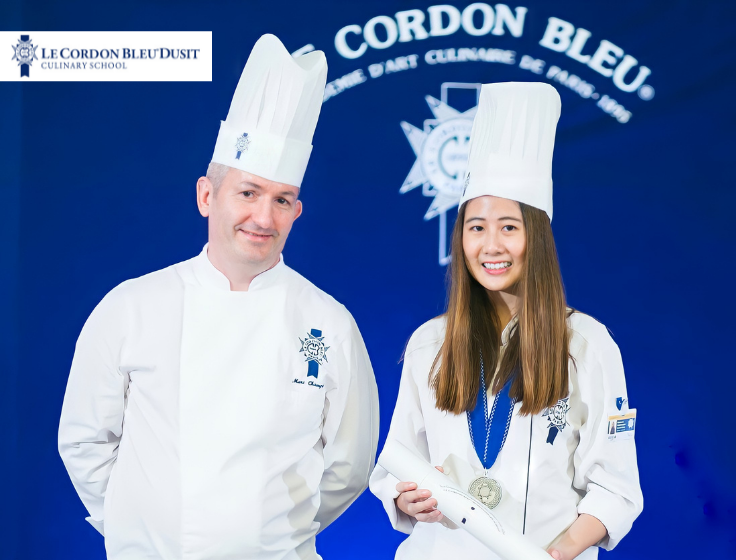
Alumni Talk - Piyakamol Vanichmongkol
Great Catch up with our pretty lady, Mai Piyakamol, the owner of Chez Nous Artisan Baking Atelier in Chiangmai. A successful alumni who completed Diplôme de ...

Le Cordon Bleu Tokyo Executive Chef Guillaume Siegler
The ingredient today is komezu, a humble staple in the Japanese pantry. Rice vinegar, or komezu, appears everywhere in Japanese cuisine – marinades, pickles, stews – and for those not overly familiar with Japanese cooking, it is used in sushi to give the rice its distinct ‘sushi-rice’ flavour.

Each area in the world has their own distinct vinegar, developed and refined based on local climates, vegetation, and customs. In Japan, where the major food crop is rice, komezu became the dominant variety just as, in France, wine vinegar developed due to the popularity of grapes. One curious thing about vinegar is that despite being a ubiquitous seasoning, it’s rare to see it cross borders: one would be hard-pressed to find Japanese rice vinegar in cuisines outside of Japan, much less in French cooking.
However, the theme of today’s ingredient challenge is surprise, and Chef Guillaume intends to elevate the average komezu and apply it inventively: “You can only create new flavour discoveries if you have no preconceptions about what you’re using.”
Chef Guillaume chose to use oysters. Acid is usually paired with the meaty bivalve, and it is often the star alongside luxurious white wines. This time, Chef Guillaume will take a similar approach to dressing the oysters, but using the modest komezu.
“Oysters have the ability to moderate acidity [and the] flavour becomes more well-rounded.”
The sauce is rice vinegar, shallots, and wine – a quintessential French combination – with some ginger and curry powder for a kick. Cooking this through to soften the acidity, chef pulls out a bottle of kasuzu, and says, “to finish.”
Made from sake lees (the fermented components in sake production), kasuzu is one of the two major types of rice vinegar.
“Kasuzu has a richness that ties all the flavours of a dish together. Adding it at the end helps bring that richness out,” explains Chef Guillaume.
From here, the chef works on building a plate that tantalizes not only the palette, but also the eyes: “The first step in cuisine is to understand the ingredients you work with. Then, you can play with how to bring out their flavours. Creating surprise and discovering new combinations is my philosophy when it comes to cooking.”

Beads of apple juice, komezu, and agar-agar, coloured with green apple peel.

Chef Guillaume’s plate is an almost whimsical play of colour and texture. The oysters lay nestled on a bed of purple tosaka (a type of seaweed), it’s natural salt still clinging like white crystal ornaments. Tiny julienne of apple and exquisite agar-agar beads of apple juice and komezu are sprinkled over top along with curls of orange mikan (Japanese mandarin) zest. It resembles more a piece of art than a dish, but the oysters also taste as fun as they look.
The surprise is in the sheer variety of texture and flavour in every bite: freshness of mikan, crunch and sweetness of apple, acidity from the vinegar, then the creamy brine of the oyster. The agar-agar beads pop to release accents of sweet and sour apple and vinegar. All these colourful tastes and textures joined together by komezu will make anyone smile.
“Cuisine has to be a combination of taste, visual appeal, textures, and aroma. Otherwise, it wouldn’t be very exciting.”
Chef Guillaume explains what he learned from using Japanese rice vinegar: “Among the many traditional Japanese seasonings, komezu is the least pungent and easiest to apply. It has a lot of potential and I’m excited to see what it can do.”
Copyright © 2025 Le Cordon Bleu International B.V. All Rights Reserved.